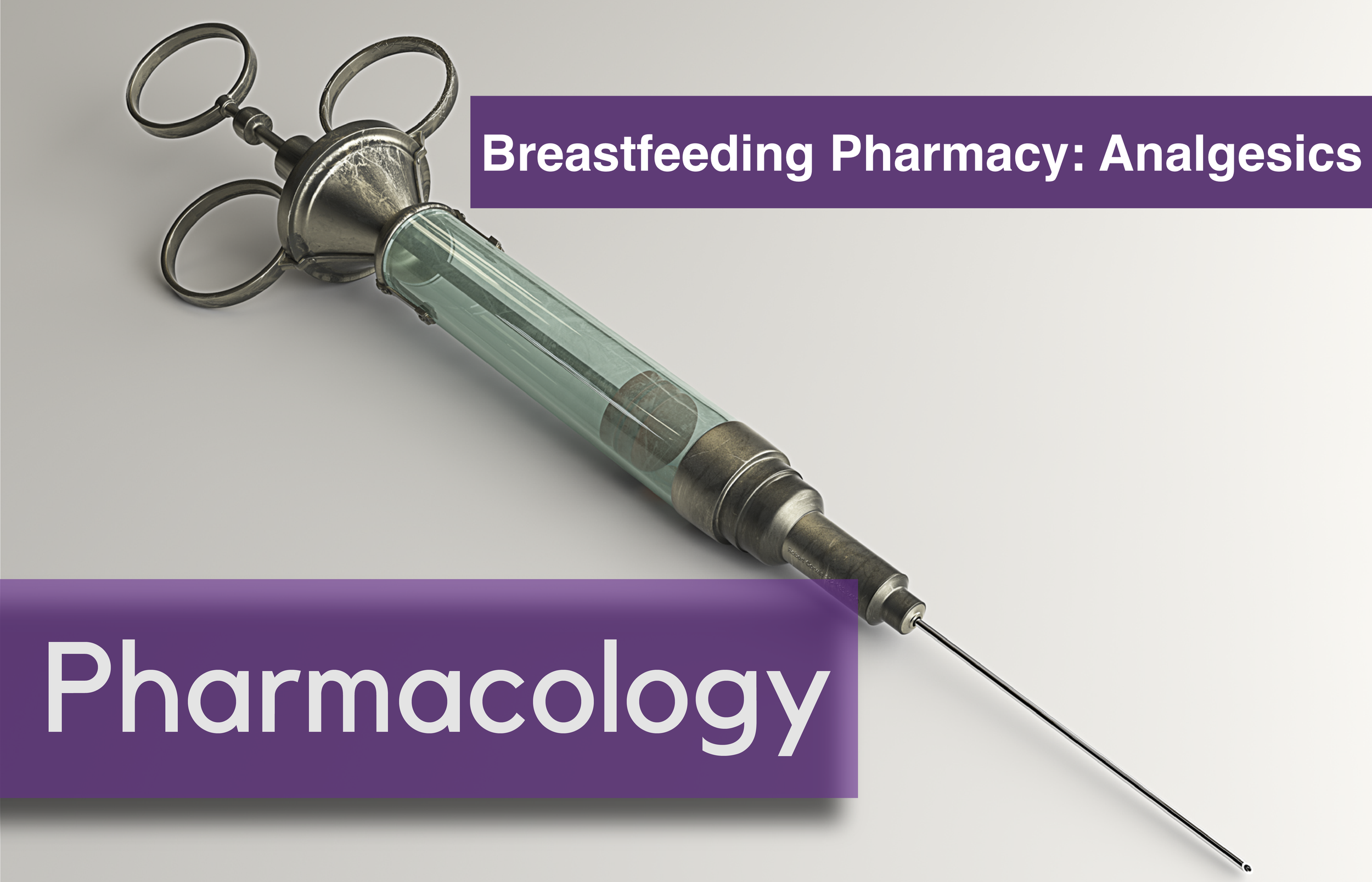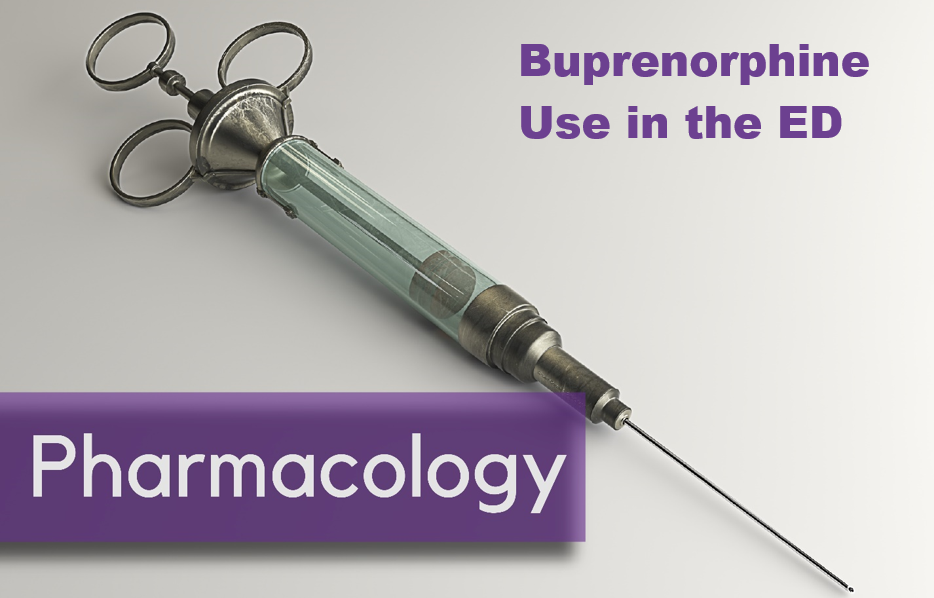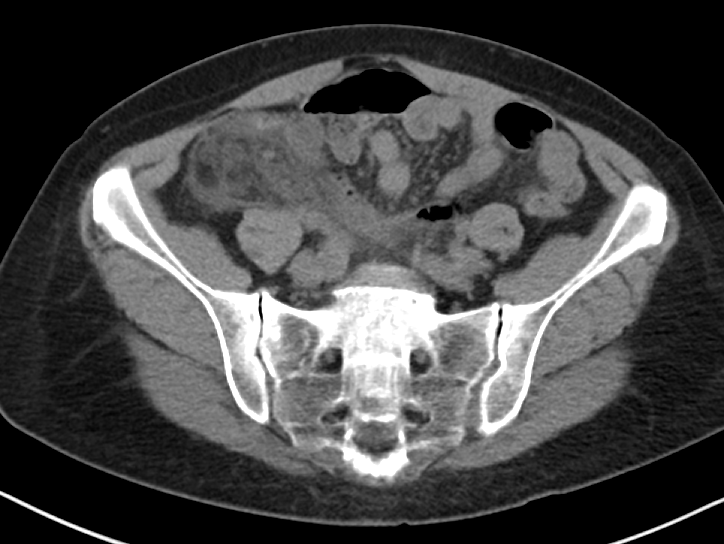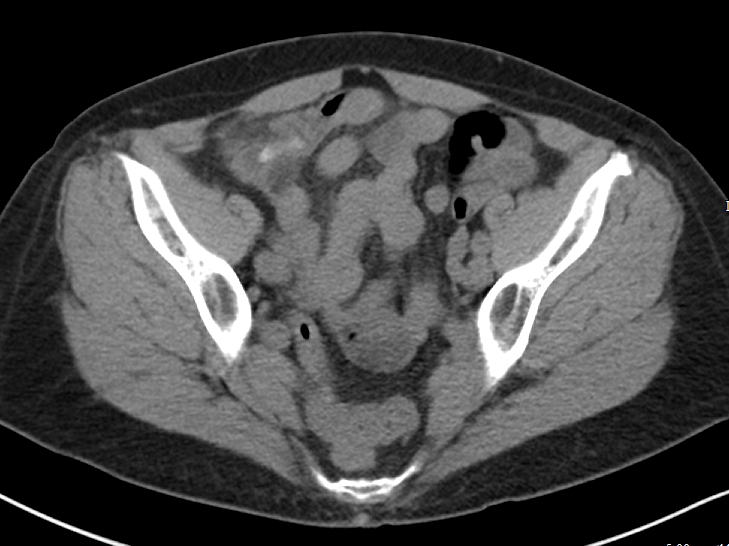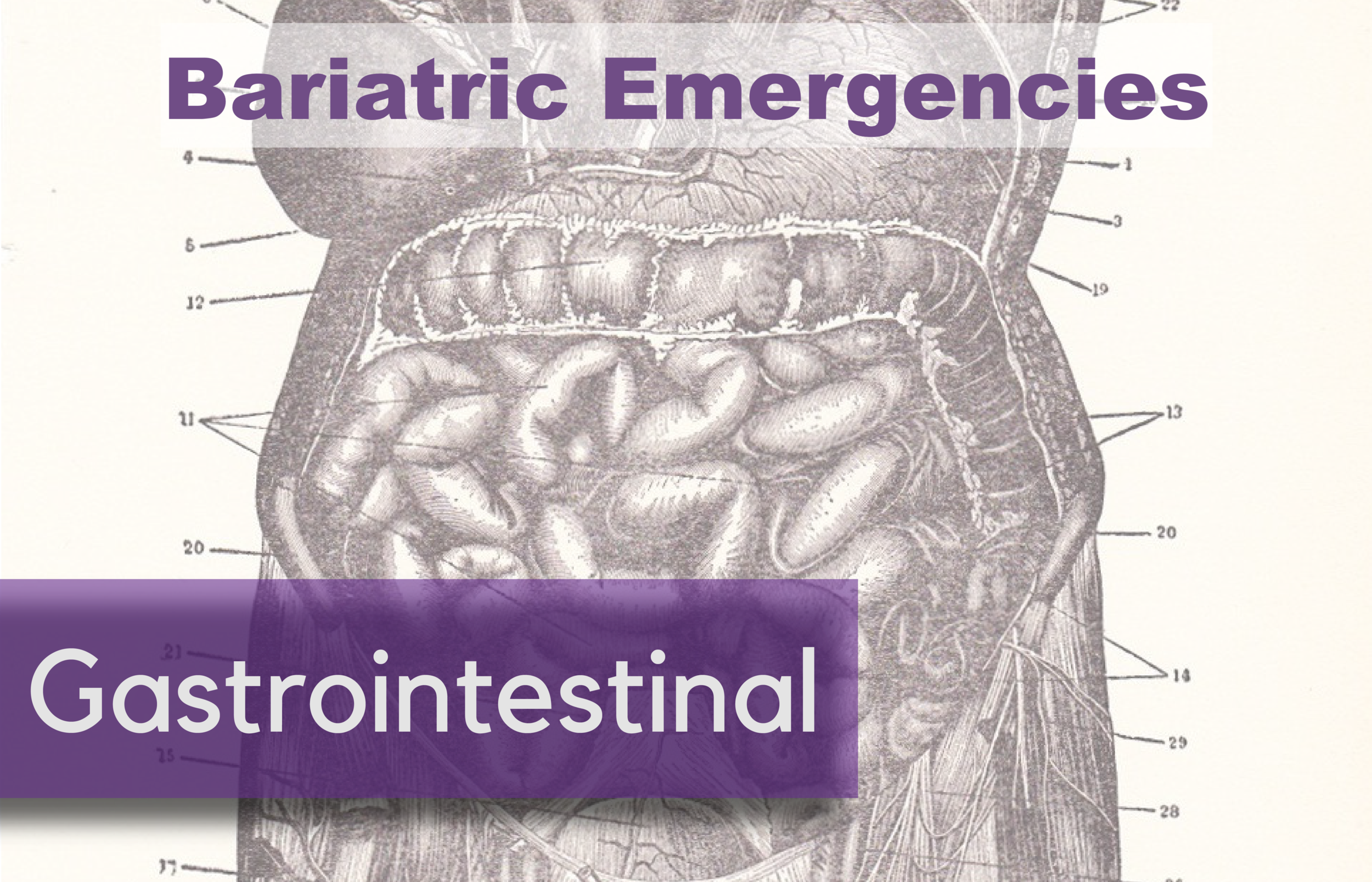An overview of the diagnosis, management, and disposition of patients who present to the emergency department with acute diverticulitis.
Antiemetics/Gastroparesis
Written by: Nery Porras, MD (NUEM ‘21) Edited by: Terese Wipple (NUEM ‘20) Expert Commentary by: Howard Kim, MD, MS
The rise of Haloperidol as an antiemetic and analgesic in Gastroparesis
Nausea and vomiting is one the most common reasons for Emergency Department visits with estimated 2.5 million ED visits a year. Treatment of nausea and vomiting can be difficult because of its numerous causes. This is illustrated by the various sources of input that feed into the central emesis center in the brainstem, including the chemoreceptor trigger zone, vagus nerve, vestibular apparatus, and splanchnic afferent nerves, among others. Within these communication networks, various neurotransmitters such as dopamine, acetylcholine, histamine and serotonin are used, leading to the numerous drugs created to treat nausea and vomiting. Among these neurotransmitters, dopamine is becoming a more effective treatment target for nausea and vomiting among certain patient populations, in particular those with gastroparesis.
Gastro-pa-what?
Gastroparesis was something I did not recall learning much about in medical school, but is a diagnosis Emergency Medicine physicians will inevitably encounter and can be frustrating to treat. By definition, gastroparesis is a syndrome of delayed gastric emptying without evidence of mechanical obstruction leading to primary symptoms of nausea, vomiting, bloating, and abdominal pain. These patients have high rates of ED utilization and are difficult to treat, often leading to hospital admission. Traditional antiemetics often do not effectively work for these patients and narcotics only worsen the pseudo-obstruction causing their symptoms. This is where the dopamine receptor pathway can be an effective target for treatment in these patients.
Antipsychotics? You must be crazy?
As a junior resident I was surprised the first time one of my senior residents mentioned haloperidol as an effective antiemetic and analgesic in patients, particularly those with functional abdominal pain and gastroparesis. Indeed, a similar medication, Droperidol had been effectively used for many years for treatment of headache, agitation, and nausea. This was until a black box warning by the FDA in 2001 for concern for QT prolongation and cardiac dysrhythmias led to its decline in use and the halt of its manufacturing in the US. However, in 2015 the American Academy of Emergency Physicians published a position statement regarding the safety of droperidol in the Emergency Department stating “droperidol is an effective and safe medication in the treatment of nausea, headache and agitation.” Haloperidol, a butyrophenone similar to Droperidol, has been used to treat nausea and vomiting in palliative care and post-operative settings. It also has some analgesic effects due to its isometric similarity to meperidine. For this reason, it has been used off-label and anecdotally for nausea, vomiting and abdominal pain in the Emergency Department. Recently there have been two articles published showing Haloperidol efficacy in the treatment of Gastroparesis [1,4]:
“Haloperidol Undermining Gastroparesis (HUGS) in the Emergency Department”
This was a retrospective case matched observational study of patients with known gastroparesis secondary to diabetes. Patients receiving 5mg IM Haloperidol were compared to themselves from a prior ED visit for the same symptoms in which they did not receive haldol. The study found statistically significant reduction in hospital admissions (5/52 [10%] vs 14/52 [27%] p-value 0.02) and reduction morphine-equivalents used (6.75 vs 10.75 p-value 0.009) with the use of Haloperidol. They also found a non-statistically significant, but likely clinically significant, reduction in ED length of stay (median 9.2 hours vs 25.4 hours p-value 0.128). There were no reported extrapyramidal side effects or cardiovascular complications, though this was a small study [2,5].
“Randomized Controlled Double-blind Trial Comparing Haloperidol Combined With Conventional Therapy to Conventional Therapy Alone in Patients With Symptomatic Gastroparesis”
This randomized controlled study ultimately enrolled 33 patients with previously diagnosed gastroparesis presenting with nausea, vomiting, and abdominal pain. Patients were randomized into receiving 5mg IV haloperidol vs placebo in addition to conventional therapy (traditional antiemetics and narcotics). The primary outcome was to look at pain and nausea reduction at 1 hour based on a visual analog scale. The haloperidol group had an average reduction in pain intensity of 5.37 points (p < 0.001) compared to 1.11 points in the placebo group (p = 0.11). The Haldol group also had an average reduction in mean nausea score of 2.70 points (p < 0.001) compared to 0.72 in the placebo group(p = 0.05). They also did a subgroup analysis of patients who did not receive opiates before intervention and still found similar reduction in pain and nausea. This study also found a decrease in rate of admission (26.7% vs 72% p = 0.009) and ED length of stay (4.8 and 9 hours p = 0.77). There were no adverse events, but the sample size was again quite small [3,6].
To use or not to use?
Gastroparesis and other similar cyclic vomiting syndromes present a therapeutic challenge to Emergency Physicians. Droperidol had been an effective tool in the treatment of nausea and vomiting but fell out of favor due to a black box warning. Literature review, as demonstrated in the AAEM position statement, has shown that perhaps this warning is not applicable to the doses used in the Emergency Department. This perhaps has led to the increase use of the antipsychotic Haloperidol in similar situations. These two studies now provide evidence for what many emergency physicians were already noticing; Haloperidol is an effective and safe treatment for nausea, vomiting and abdominal pain in gastroparesis. Perhaps this evidence may be extrapolated to other cyclic vomiting syndromes and treatment of other functional abdominal pain in the future.
Expert Commentary
This is a great review on the use of butyrophenones in the treatment of gastroparesis and other causes of cyclical vomiting, such as cannabinoid hyperemesis syndrome. Haloperidol is an excellent tool to keep in your back pocket for the occasional patient with intractable nausea/vomiting; providing effective symptom relief can be both satisfying for patients and gratifying for clinicians.
“Droperidol” seems to be one of those magical words in emergency medicine that inevitably draws out a number of opinions on the Black Box warning and old war stories from the more seasoned physicians. The most recent generation of U.S. ED physicians were trained in the absence of droperidol, however U.S. manufacturing resumed in 2019 and some hospitals now have access to this mythical medication. In the end, I don’t think it is worthwhile to debate the relative merits of droperidol vs haloperidol because many ED physicians will only have access to one or the other on their hospital formulary, and we have had good success with haloperidol over the last decade or so.
Interestingly, both of the studies you cited used a 5mg IM or IV dose of haloperidol. In my anecdotal experience, smaller doses of haloperidol (e.g., 2mg IV) are also effective for the relief of intractable nausea/vomiting, in addition to migraine headaches and functional abdominal pain. To my knowledge, there is not a great comparative effectiveness study of various haloperidol dosing regimens.
One additional point that I would advise readers about is that ED patients are increasingly tech-savvy and tend to Google medicines that they are about to receive. Thus, I always first give the patient a disclaimer that if they look up the word “haloperidol” they will see that it is typically used as a psychiatric medicine for conditions such as schizophrenia. I mention that this is not the indication for which we are using the medication today, but rather that haloperidol happens to have very effective anti-nausea properties due to is effect on dopamine receptors in the part of the brain that regulates nausea. I give a similar disclaimer when prescribing tamsulosin to female patients with significant ureteral stone burden – reassuring them that we do not, in fact, think they have an enlarged prostate.
In summary, I agree with you that haloperidol is an effective and often under-utilized treatment for intractable nausea/vomiting. As with everything in emergency medicine, it’s best to know multiple treatment modalities for common conditions so that we can adapt our response to specific situations or challenges as needed. Butyrophenones are a good treatment option for patients that do not respond to traditional anti-emetics, as are benzodiazepines and anti-histamines.
Howard Kim, MD, MS
Assistant Professor
Department of Emergency Medicine
Center for Health Services & Outcomes Research
Northwestern University Feinberg School of Medicine
How To Cite This Post:
[Peer-Reviewed, Web Publication] Porras, N. Whipple, T. (2020, Dec 14). Anti-emetics/Gastroparesis. [NUEM Blog. Expert Commentary by Kim, H]. Retrieved from http://www.nuemblog.com/blog/antiemetics-gastroparesis
Other Posts You May Enjoy
References
Perkins, Jack, et al. “American Academy of Emergency Medicine Position Statement: Safety of Droperidol Use in the Emergency Department.” The Journal of Emergency Medicine, vol. 49, no. 1, 2015, pp. 91–97.
Ramirez, Rene, et al. “Haloperidol Undermining Gastroparesis Symptoms (HUGS) in the Emergency Department.” The American Journal of Emergency Medicine, vol. 35, no. 8, 2017, pp. 1118–1120.
Roldan, Carlos J., et al. “Randomized Controlled Double-Blind Trial Comparing Haloperidol Combined With Conventional Therapy to Conventional Therapy Alone in Patients With Symptomatic Gastroparesis.” Academic Emergency Medicine, vol. 24, no. 11, 2017, pp. 1307–1314.
Weant, Kyle A. et al. “Antiemetic Use in the Emergency Department.” Advanced Emergency Nursing Journal, vol. 39, no. 2, 2017.
“Diabetic Gastroparesis Needs HUGS.” R.E.B.E.L. EM - Emergency Medicine Blog, 29 Nov. 2017, rebelem.com/diabetic-gastroparesis-needs-hugs/.
“SGEM#196: Gastroparesis – I Feel Like Throwing Up.” The Skeptics Guide to Emergency Medicine, 11 Dec. 2018, thesgem.com/2017/11/sgem196-gastroparesis-i-feel-like-throwing-up/.
A Practical Approach to Abdominal Imaging
Written by: Zach Schmitz MD (PGY-3) Edited by: David Kaltman, MD (PGY-4) Expert commentary by: Samir Abboud, MD
I often find myself in a gray zone when it comes to imaging abdominal pain. Any third year medical student worth their salt can tell you to get the RUQ ultrasound for the fat, fertile, forty year-old female with RUQ abdominal pain, fever, positive Murphy’s sign, and leukocytosis. However, my patients don’t usually fit the textbook, and I’m often thinking about what I might miss or see with test X vs test Y. Below, I’ll touch on a few common dilemmas where the optimal choice of imaging modality isn’t immediately clear by focusing on what you actually gain or lose by ordering one imaging test over another.
Scenario 1: Stone or Appendicitis?
Case: 62 year old female with HTN and HLD presents with RLQ pain. The pain woke her this morning and has been intermittent all day, occurring exclusively when she urinates. It is sharp, non-radiating, and increasing in intensity. She never had a pain like this and can now barely sit still. She has thrown up a few times over the past few hours. Vitals are stable and she is afebrile. She appears uncomfortable with RLQ tenderness but no rebound or guarding. Labs show slight leukocytosis, and urine has no blood.
If I suspect stone over appendicitis, will a CT without contrast miss appendicitis?
CT, MR, and US are well studied in their ability to detect and accurately diagnose appendicitis.[1]
CT with IV contrast is 96-100% sensitive and 91-100% specific. Per the American College of Radiology’s (ACR) appropriateness system, this is the most appropriate initial test for suspected appendicitis in adults.[2]
MR is 96% sensitive and 96% specific.[3]
Ultrasound has a wide range of data, with sensitivity ranging from 21-95.7% and specificity of 71-97%.[2]
CT without oral or IV contrast is nearly as useful for diagnosing appendicitis
A meta-analysis by Xiong et al included seven original studies investigating a total of 845 patients.[4]
Pooled sensitivity - 0.90 (95% CI: 0.86-0.92)
Pooled specificity - 0.94 (95% CI: 0.92-0.97)
Pooled positive likelihood ratio - 12.90 (95% CI: 4.80-34.67)
Pooled negative likelihood ratio - 0.09 (95% CI: 0.04-0.20)
Will a contrast enhanced CT for appendicitis ruin my chance to catch a kidney stone?
Non-contrast CT is the emergency standard in diagnosing nephrolithiasis with good reason - it is 97% sensitive and 95% specific.[5]
Will contrast ruin the ability to detect a stone?
This makes theoretical sense as stones and contrast are both hyper-intense on CT.
Sensitivity is decreased for small stones with contrast enhanced studies.
However, for stones > 3mm, sensitivity remains 95%.[5]
Only about 5% of stones that small ultimately require intervention.
Takeaways: You sacrifice a bit with a non-contrast study looking for appendicitis and a contrast enhanced study looking for stone, but both still work well. The American Urology Association recommends consultation for stones > 10mm.[6] Urology would also need to be involved with signs of sepsis, abscess, deterioration in renal function, intractable symptoms, or a transplant/solitary kidney. It seems I am very likely to see a stone requiring something other than watchful waiting on a CT with contrast. It is worse to miss an appendicitis than a 2mm stone, so contrast might make more sense if it’s close.
Scenario 2: RUQ Ultrasound after Negative CT San
Case: 84 year old male with a history of prostate cancer and hypertension presents from a nursing home with 4 days of diffuse abdominal pain. He has had no vomiting or bowel movements over this time. No urinary symptoms. He is hemodynamically stable, and his abdomen is diffusely tender (maybe worse in the RUQ) and distended but overall not terribly impressive. You order a CT for possible obstruction and it just shows a large stool burden. The gallbladder was visualized and looked normal.
If a CT is negative, should I get a RUQ US to look for cholecystitis?
RUQ Ultrasound
Per ACR, this is the most appropriate initial study for RUQ pain and suspected biliary disease.[7]
A 2012 meta analysis showed a sensitivity of 81% (95% CI 75-87%) and specificity of 88% for acute cholecystitis.[8]
It has the advantage of being dynamic, with a sonographic Murphy sign independently showing an 86% sensitivity and 35% specificity, positive predictive value of 43%, and negative predictive value of 82%.[9]
Computed Tomography (CT)
The same 2012 meta analysis only had one study with CT, but noted a sensitivity of 94% with fairly broad confidence intervals (95% CI 73-99) and a specificity of only 59%.[8]
ACR notes CT’s NPV for acute cholecystitis approaches 90%.[7]
A 2015 study looked at 101 patients who went to the OR and got both a CT and US. For acute cholecystitis, the sensitivities for CT and US were 92% and 79% respectively. For cholilithiasis, sensitivities for CT and US were 60% and 89% respectively.[10,11]
ACR states it is “usually appropriate” to proceed with CT for RUQ pain and suspected biliary disease with a negative or equivocal ultrasound.[7]
Although it lacks a sonographic murphy’s sign equivalent, its advantage is to help in operative planning and seeing complications, such as perforation or gangrene.
MRI has a sensitivity of 85% and a specificity of 81%. It is also considered “usually appropriate” by ACR if ultrasound is negative or equivocal[7]
Cholescintigraphy is the best imaging, showing 97% sensitivity and 90% specificity for acute cholecystitis. It is also the most appropriate study if you suspect acalculous cholecystitis.[7]
Takeaways: There are a few interesting points from this set of data. First, CT seems to have at least as good of ability to pick up cholecystitis compared to ultrasound. However, it is much worse in detecting gallstones themselves, which may be very relevant to a patient with abdominal pain. Second, the sensitivity of both RUQUS or CT isn’t really that great and we are probably missing a few episodes of cholecystitis. If there is a very high index of suspicion but negative imaging, it may be worthwhile to pursue additional workup. Overall, if the CT shows a normal gallbladder, and you are not worried about intractable biliary colic, the ultrasound probably won’t add much.
Scenario 3: Female Pelvic Pain
Case: 33 year old female with a history of chlamydia infection presenting with right sided abdominal pain. The pain has gradually been getting worse for 1 day. She has had a few episodes of vomiting. There is some white vaginal discharge she always has. On exam, she is tachycardic, normotensive, and febrile to 101.5. She has RLQ tenderness with voluntary guarding. On pelvic exam, there is some white vaginal discharge, CMT, R adnexal tenderness that seems less intense than her RLQ tenderness, and no masses noted.
If this patient had a normal appendix and ovaries after a contrast enhanced CT for appendicitis, how useful is an additional transvaginal ultrasound to rule out gynecologic pathologies?
For ovarian torsion:
A retrospective study of 834 patients showed the NPV of a contrast enhanced CT of the pelvis for ovarian torsion is 100%.[12]
A prospective study of 199 patients showed doppler ultrasound has a sensitivity and specificity for torsion of 100 and 97%.[13]
For Tubo-Ovarian Abscess (TOA):
CT is thought to be between 78 and 100% sensitive.[14]
2011 literature review gives a broad range of sensitivity and specificity for US in TOA with a sensitivity of 56-93% and specificity from 89-98%.[15]
Takeaways: ACR appropriates rates ultrasound as the most appropriate test for female pelvic pain.[14] However, it also rates CT with contrast as more appropriate for suspected appendicitis.[2] This patient raises concerns for both, and a CT was done first. CT is good for finding intra abdominal and pelvic abscess. It is more difficult to assess how useful ultrasound is for TOA, as many studies in the literature review were either before year 2000 or used a transabdominal approach. Overall, if someone has a CT scan for appendicitis that shows normal ovaries, the transvaginal ultrasound seems to add little for either torsion or TOA.
One potential dangerous conclusion from this set of data is that we should just CT everyone up front. While CT shows good sensitivities for many of the pathologies in question, simply ordering a CT first ignores the many good reasons - such as cost, radiation dose, speed, improved specificity and comparable sensitivity, resource utilization, sonographic murphy sign - RUQUS and pelvic ultrasound are the most appropriate initial tests for suspect biliary and pelvic pathology. That said, it a patient has an entirely normal CT that was already performed for other indicated reasons, the use of additional imaging may be unnecessary and should be considered carefully. Overall, the question of exactly what imaging test to order when ruling out common, emergent, abdominal pathologies is often a difficult one with shades of gray. By having a better understanding of exactly what type of information we are getting and missing from each test we order, emergency physicians can more quickly, safely, and accurately diagnose and treat our patients.
Expert Commentary
This is a thoughtful, well-reasoned approach to optimizing the imaging strategy in challenging, atypical clinical scenarios. To add a few nuances to some of the points raised:
When considering a contrast-enhanced versus non-contrast CT (both IV and PO) in the clinically ambiguous scenario, it is important to consider your patient’s body habitus. Figure 1 includes representative images from a non-contrast enhanced CT of a patient with a BMI above 25. You can clearly see the inflammatory stranding in the right lower quadrant mesenteric fat (Figure 1a) and portions of an appendicolith (Figure 1 b), in this patient who ultimately proved to have appendicitis. The natural contrast provided by the patient’s mesenteric fat in this scenario helps us work around the absence of IV contrast.
Figure 1a
Figure 1b
Figure 2 includes representative images from a contrast enhanced CT of a very thin patient, with a relative paucity of intra-abdominal fat. In this patient, the relative absence of natural contrast would greatly reduce our chances to diagnose appendicitis (or even identify the appendix) in the absence of IV contrast. PO contrast is additionally likely to be most helpful in very thin patients [Alabousi 2015].
Figure 2
The author asks (and answers) a very insightful question with regards to identifying kidney stones on contrast enhanced CT. A few points to add:
Assuming the contrast enhanced study is obtained prior to the excretory phase of imaging (and most routine studies are) ureteral stones should still be largely visible - the stones that will generally be more difficult to identify will be the non-obstructing stones still within the collecting system. Additionally, while there is indeed a small sacrifice in sensitivity for small stones with contrast enhanced studies, the identification of secondary complications is much improved.
Consider Figure 3, which demonstrates a 2 mm stone in the proximal left ureter identified on a contrast enhanced study. Notice the slightly delayed nephrogram on the left relative to the right, which could indicate a component of obstructive uropathy. Similarly, identification of such complications as pyonephrosis, pyelonephritis, and perinephric abscess is much improved with contrast enhanced images. For this reason, I would suggest that in the clinically ambiguous scenario, erring on the side of the contrast enhanced study would be wise.
Figure 3
It is important to note that the CT scanner installed in our emergency department is a dual-energy machine. Many of our other departmental scanners are dual-energy as well. With these scanners, we are able to apply algorithms to deconstruct the elemental composition of stones and provide more information than simply size and location - i.e. uric acid or non-uric acid stone - if requested. We can additionally generate virtual non-contrast images from the contrast-enhanced images, without exposing our patients to additional radiation. While it is tempting to think that we could recapture some of the sensitivity for renal stones using these virtual non-contrast images, this has unfortunately not been borne out in the literature at this time [Vrtiska 2010], though remains an area of continued investigation as imaging technology is further improved.
The advantages of dual-energy imaging are not only limited to the kidneys. With regards to the evaluation of biliary colic, virtual monochromatic images can be generated with resulting increased conspicuity of gallstones, even those that appear isodense to bile on the conventional images [Ratanaprasatporn 2018].
In general, if you find yourself with a high degree of suspicion for any disease process and discordant imaging findings, I would encourage you to call your radiologist. The additional clinical information exchanged during such a call may direct what additional data sets should be generated and what additional imaging studies may be of most benefit. Last, but certainly not least, that “second look” armed with additional clinical information can pick up on subtle findings that are, in isolation, entirely non-specific, but in a certain clinical scenario could clinch the diagnosis you are seeking.
References:
Alabousi A et al. Is Oral Contrast Necessary for Multidetector Computed Tomography Imaging of Patients With Acute Abdominal Pain? Canadian Association of Radiologists Journal. 2015;66(4): 318 - 322
Ratanaprasatporn L et al. Multimodality Imaging, including Dual-Energy CT, in the Evaluation of Gallbladder Disease. Radiographics 2018;38(1): 75-89
Vrtiska TJ et al. Genitourinary Applications of Dual-Energy CT. American Journal of Roentgenology. 2010;194: 1434-1442.
Samir Abboud, MD
Assistant Professor of Radiology
Northwestern University
How To Cite This Post:
[Peer-Reviewed, Web Publication] Schmitz, Z. Kaltman, D. (2020, Feb 10). An Approach to Abdominal Imaging. [NUEM Blog. Expert Commentary by Abboud, S]. Retrieved from http://www.nuemblog.com/blog/abdominal-imaging.
Other Posts You Might Enjoy…
References
Dahabreh IJ, Adam GP, Halladay CW, Steele DW, Daiello LA, Weiland LS, Zgodic A, Smith BT, Herliczek TW, Shah N, Trikalinos TA. Diagnosis of Right Lower Quadrant Pain and Suspected Acute Appendicitis. Comparative Effectiveness Review No. 157. (Prepared by the Brown Evidence-based Practice Center under Contract No. 290-2012-00012-I.) AHRQ Publication No. 15(16)-EHC025-EF. Rockville, MD: Agency for Healthcare Research and Quality; December 2015. www.effectivehealthcare.ahrq.gov/reports/final.cfm.
American College of Radiology. ACR Appropriateness Criteria®: RLQ pain. Available at https://acsearch.acr.org/docs/69357/Narrative/ Accessed 5/10/19.
Duke E, Kalb B, Arif-Tiwari H, et al. A Systematic Review and Meta-Analysis of Diagnostic Performance of MRI for Evaluation of Acute Appendicitis. AJR Am J Roentgenol 2016;206:508-17.
Xiong B, Zhong B, Li Z, Zhou F, Hu R, Feng Z, Xu S, Chen F. Diagnostic Accuracy of Noncontrast CT in Detecting Acute Appendicitis: A Meta-analysis of Prospective Studies. Am Surg. 2015 Jun;81(6):626-9.
Curhan G, Aronson M, Preminger G. Diagnosis and acute management of suspected nephrolithiasis in adults. UpToDate.com. April 30 2019.
Assimos D, Krambek A, Miller N et al. Surgical Management of Stones: AUA/Endourology Society Guideline (2016). https://www.auanet.org/guidelines/kidney-stones-surgical-management-guideline. Accessed 5/10/19.
American College of Radiology. ACR Appropriateness Criteria®: RUQ pain. Available at https://acsearch.acr.org/docs/69474/Narrative/ .
Kiewiet J.J., Leeuwenburgh M.M., Bipat S., et al: A systematic review and meta-analysis of diagnostic performance of imaging in acute cholecystitis. Radiology 2012; 264: pp. 708-720.
Bree, Robert L. Further observations on the usefulness of the sonographic Murphy sign in the evaluation of suspected acute cholecystitis. Journal of Clinical Ultrasound. March/April 1995.
Wertz JR1,2, Lopez JM3, Olson D4, Thompson WM1,2. Comparing the Diagnostic Accuracy of Ultrasound and CT in Evaluating Acute Cholecystitis. AJR Am J Roentgenol. 2018 Aug;211(2):W92-W97. doi: 10.2214/AJR.17.18884. Epub 2018 Apr 27.
Fagenholz, P et al. Computed Tomography Is More Sensitive than Ultrasound for the Diagnosis of Acute Cholecystitis. Surg Infect (Larchmt). 2015 Oct;16(5):509-12. doi: 10.1089/sur.2015.102. Epub 2015 Sep 16.
Lam A1, Nayyar M2, Helmy M2, Houshyar R2, Marfori W2, Lall C2.Assessing the clinical utility of color Doppler ultrasound for ovarian torsion in the setting of a negative contrast-enhanced CT scan of the abdomen and pelvis. Abdom Imaging. 2015 Oct;40(8):3206-13. Doi: 10.1007/s00261-015-0535-4.
Laufer, M. Ovarian and fallopian tube torsion. UpToDate. April 30 2019. https://www.uptodate.com/contents/ovarian-and-fallopian-tube-torsion?search=ovarian%20torsion&source=search_result&selectedTitle=1~70&usage_type=default&display_rank=1 .
Beigi, R. Epidemiology, clinical manifestations, and diagnosis of tubo-ovarian abscess. UpToDate. April 30 2019. https://www.uptodate.com/contents/epidemiology-clinical-manifestations-and-diagnosis-of-tubo-ovarian-abscess?search=tuboovarian%20abscess&source=search_result&selectedTitle=2~24&usage_type=default&display_rank=2 .
Lee DC1, Swaminathan AK. Sensitivity of ultrasound for the diagnosis of tubo-ovarian abscess: a case report and literature review. J Emerg Med. 2011 Feb;40(2):170-5. doi: 10.1016/j.jemermed.2010.02.033. Epub 2010 May 13.
American College of Radiology. ACR Appropriateness Criteria®: Female Pelvic Pain. Available at https://acsearch.acr.org/docs/69503/Narrative/ .

